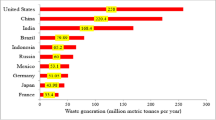Abstract
Conventional (two products) cyclone have been widely used for classification in most mineral plants. But it is hard to satisfy the requirements of some productions by changing the parameter, such as cylindrical length and cone angle. In this paper, a three-product cyclone was developed and tested for recovery of the solid particles, which was composed of a primary cylinder and a secondary cyclone. Most of the fine particles were separated in the primary cylinder of the three-product cyclone by over flow, in order to reduce the particle size distribution before the separation of second stage. The remaining particles would be further classified by the secondary cyclone of the three-product cyclone. The design and operation of the three-product cyclone was systematically studied, and the size distribution have been analyzed of the three produces. The influence of the major parameters of cyclone, such as the spigot diameter, vortex finder diameter, and vortex finder length, on the solid recovery were investigated. Meanwhile, the regression models of the solid percent of the cylinder overflow, the cyclone overflow, and the cyclone underflow were developed through computer fitting analysis, which fitted well with the experimental values of solids recovered in the three products. The application of the regression models on the three products was proposed.







Similar content being viewed by others
Abbreviations
- SD:
-
Spigot diameter
- VFD:
-
Vortex finder diameter
- VFL:
-
Vortex finder length
- Cyl.O/F:
-
The cylinder overflow
- Cyc.O/F:
-
The cyclone overflow
- Cyc.U/F:
-
The cyclone underflow
References
Hacifazlioglu, H. (2012). Application of the modified water-only cyclone for cleaning fine coals in a Turkish washery, and comparison of its performance results with those of spiral and flotation. Fuel Processing Technology, 102(10), 11–17.
Gupta, A. K., Banerjee, P. K., Dutta, A., & Mishra, A. (2007). Recovery of clean coal fines through a combination of gravity concentrator and flotation processes. Mineral Processing and Extractive Metallurgy Review, 28(4), 299–319.
Fourie, P. J. F., Walt, P. J. V. D., & Falcon, L. M. (1980). The beneficiation of fine coal by dense-medium cyclone. Journal- South African Institute of Mining and Metallurgy, 80(10), 357–361.
Magwai, M. K., & Bosman, J. (2008). The effect of cyclone geometry and operating conditions on spigot capacity of dense medium cyclones. International Journal of Mineral Processing, 86(1–4), 94–103.
Lundt, M., & Korte, G. D. (2010). Leeuwpan fine coal dense medium plant. Journal- South African Institute of Mining and Metallurgy, 110(11), 671–676.
Turek, M. L., & Klima, M. S. (2003). Dense-medium cycloning of fine coal refuse material. Coal Preparation, 23(5–6), 267–284.
Lu, S., Lu, X., Yuan, Z., Zhang, C., Liu, J., Liu, P., et al. (2016). The beneficiation of fine coal by a combination of three-product cyclone and fine screen. International Journal of Coal Preparation & Utilization, 36(4), 1–11.
Mikhail, M. W., Salama, A. I. A., Parsons, I. S., & Humeimiuk, O. E. (1988). Evaluation and application of spirals and water-only cyclones in cleaning fine coal. Coal Preparation, 6(1–2), 53–78.
Majumder, A. K., & Barnwal, J. P. (2011). Processing of coal fines in a water-only cyclone. Fuel, 90(2), 834–837.
Kranendonk, G., Hopster, H., Van, E. F., Van, R. K., Fillerup, M., De, G. J., et al. (2012). Optimization of some parameters in a modified water-only cyclone for metallurgical coal production from high-ash fine coking coals. International Journal of Coal Preparation & Utilization, 32(6), 290–297.
Mainza, A., Powell, M. S., & Knopjes, B. (2004). Differential classification of dense material in a three-product cyclone. Minerals Engineering, 17(5), 573–579.
Bednarski, S. (1992). Three-product hydrocyclone for simultaneous separation of solids both heavier and lighter than liquid medium. Springer, Netherlands, 12, 397–404.
Kelsall, D. F. (1955). A further study of the hydraulic cyclone. Chemical Engineering Science, 2(6), 254–272.
Mainza, A., Narasimha, M., Powell, M. S., Holtham, P. N., & Brennan, M. (2006). Study of flow behaviour in a three-product cyclone using computational fluid dynamics. Minerals Engineering, 19(10), 1048–1058.
Majumder, A. K., Shah, H., & Barnwal, J. P. (2006). Comparative study on magnetite medium stability in a vorsyl separator and in a heavy medium cyclone. Coal Preparation, 26(3), 165–179.
Chen, J., Chu, K., Zou, R., Yu, A., Vince, A., Barnett, G. D., et al. (2016). Systematic study of effect of particle size distribution in a dense medium cyclone by Johnson’s S B function. Minerals Engineering, 91, 16–33.
Fan, P., Peng, H., & Fan, M. (2016). Using a permanent magnetic field to manipulate the separation effect of a dense medium cyclone. Separation Science and Technology, 11, 1913–1923.
Liu, Y., Cheng, Q., Bo, Z., & Feng, T. (2015). Three-phase hydrocyclone separator—A review. Chemical Engineering Research and Design, 100, 554–560.
Jacobs, J., & Korte, G. J. D. (2013). The three-product cyclone: Adding value to South African coal processing. Journal-South African Institute of Mining and Metallurgy, 113(113), 859–863.
Korsak, L. L. (1997). Three-product hydrocyclone for classification of coal slurries. Fuel & Energy Abstracts, 3, 149.
Obeng, D. P., & Morrell, S. (2003). The JK three-product cyclone-performance and potential applications. International Journal of Mineral Processing, 69(1–4), 129–142.
Meyer, E. J., & Craig, I. K. (2014). Coal dense medium separation dynamic and steady-state modelling for process control. Minerals Engineering, 65(2), 98–108.
Ahmed, M. M., Ibrahim, G. A., & Farghaly, M. G. (2009). Performance of a three-product hydrocyclone. International Journal of Mineral Processing, 91(1–2), 34–40.
Acknowledgements
This work was supported by the National Natural Science Foundation of China (Grant No. 21276145); the Natural Science Foundation of Shandong Province (Grant No.ZR2016EEM37).
Author information
Authors and Affiliations
Corresponding author
Rights and permissions
About this article
Cite this article
Zhang, Y., Liu, P., Zhang, Y. et al. The Classification Performance of a Three-Product Cyclone. Wireless Pers Commun 103, 55–68 (2018). https://doi.org/10.1007/s11277-018-5425-y
Published:
Issue Date:
DOI: https://doi.org/10.1007/s11277-018-5425-y




